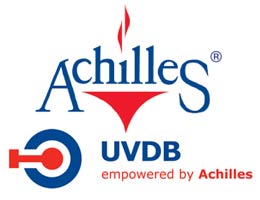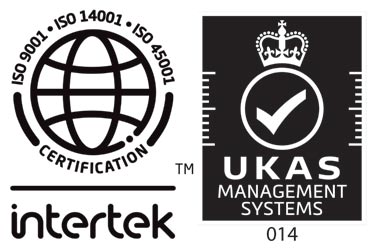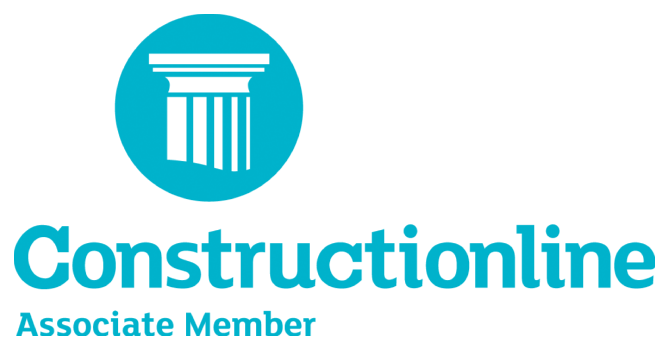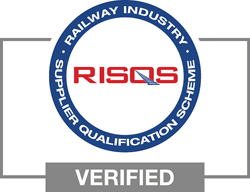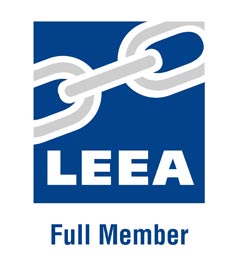Crosby Shackles Information
| Competition | Crosby | |
|
DESIGN The theoretical reserve capability of carbon shackles should be as a minimum 5 to 1, and alloy shackles a minimum of 5 to 1*. Known as the DESIGN FACTOR, it is usually computed by dividing the catalog ultimate load by the working load limit. The ultimate load is the average load or force at which the product fails or no longer supports the load. The working load limit is the maximum mass or force which the product is authorized to support in general service. The design factor is generally expressed as a ratio such as 5 to 1. Also important to the design of shackles is the selection of proper steel to support fatigue, ductility and impact properties. |
Ask: What is Working Load Limit and design factor for shackles? Ask: Is deformation upon overloading a critical consideration in their design? Ask: Do they jeopardize other properties by having hardness high in order to increase working load or design factor? |
Crosby carbon shackles have the highest design factor (6 to 1) in the industry. All of Crosby’s design factors are documented. Crosby purchases only special bar forging quality steel with special cleanliness and guaranteed hardenability. All material chemistry is independently verified prior to manufacturing. The design of Crosby shackles assure that strength, ductility and fatigue properties are met. |
|
CLOSED DIE FORGED The proper performance of premium shackles depends on good manufacturing techniques that include proper forging and accurate machining. Closed die forging of shackles assures clear lettering, superior grain flow, and consistent dimensional accuracy. A closed die forged bow allows for an increased cross section that, when coupled with quench and tempering, enhances strength and ductility. Closed die bow forgings combined with close tolerance pin holes assures good fatigue life. Close pin to hole tolerance has been proven to be critical for good fatigue life, particularly with screw pin shackles. |
Ask: Are their shackles closed die forged with close tolerance pin holes? Ask: Do their shackles have good fatigue life? Ask: Do their shackles have a fatigue life that meets the new world standards? Many forge bows, utilizing an open die forging process which allows for inconsistent dimensional accuracy and increased pin hole clearance, thus jeopardizing the fatigue life of the shackle in actual use. |
Each shackle is closed die forged. Closed die forging produces consistent dimensions. Close tolerance holes and concentric pins with good surface finishes are provided by Crosby and are proven to provide improved fatigue life in actual use. Crosby shackles are fatigue rated as well as load rated. |
|
QUENCHED AND TEMPERED Quench and tempering assures the uniformity of performance and maximizes the properties of the steel. This means that each shackle meets its rated strength and has required ductility, toughness, impact and fatigue properties. The requirements of your job demand this reliability and consistency. This quench and tempering process develops a tough material that reduces the risk of brittle, catastrophic failure. The shackle bow will deform if overloading occurs, giving warning before ultimate failure. |
Ask: Are their bows and pins quenched and tempered? Ask: If not, are they willing to accept the increased risk of inconsistency? Ask: If not, why are they willing to accept inferior impact, toughness, and product deformation? Ask: Why do many manufacturers not recommend non-heat treated shackles for overhead lifting? Ask: Why do some recommend Quench and Tempering for alloy but not carbon grades? Many normalize the shackle bows. As a result, desired properties are not achieved. A few even provide bows in an “as forged” condition, resulting in the possibility of brittle failure. |
All Crosby shackle bows and pins are quenched and tempered, which enhances their performance under cold temperatures and adverse field conditions. Crosby’s Quenched and Tempered carbon shackles are recommended for all critical applications including overhead lifting. Alloy shackles are recommended when specific dimensional requirements dictate a size that requires higher working load limits. Crosby’s Quenched and Tempered shackles provide the tensile strength, ductility, impact and fatigue properties that are essential if they are to perform time after time in adverse conditions. These properties assure that the inspection criteria set forth by ANSI will effectively monitor the ability of the shackles to continue in service. |
|
IDENTIFICATION AND APPLICATION INFORMATION The proper application of shackles requires that the correct type and size of shackle be used. The shackle’s working load limit, its size, a traceability code and the manufacturer’s name should be clearly and boldly marked in the bow. Traceability of the material chemistry and properties is essential for total confidence in the product. Material chemistry should be independently verified prior to manufacturing. |
Ask: Do they have an active traceability system used in manufacturing? Ask: Is the material chemistry independently verified? Ask: What training support is provided? |
Crosby forges “Crosby” or “CG”, the Working Load Limit, and the Product Identification Code (PIC) into each bow and pin of its full line of screw pin, round pin, and bolt type anchor and chain shackles. Seminars conducted by Crosby provide training on the proper use of shackles. Crosby training packets, supplied free to attendees of Crosby seminars, provide training materials needed to explain the proper use of shackles. |
Crosby Value Added
- Charpy impact properties: Crosby’s Quenched and Tempered shackles have enhanced impact properties for greater toughness at all temperatures. If requested at the time of order, Crosby can provide Charpy impact properties.
- Fatigue properties: Fatigue properties are available for 1/3 to 55 metric ton shackles. These Crosby shackles are fatigue rated to 20,000 cycles at 1-1/2 times the Working Load Limit.
- Ductility properties: Typical ductility properties are available for all sizes upon special request.
- Hardness levels and material tensile strengths: Typical values are available for all sizes of shackles, and actual values can be furnished if requested at the time of order.
- Proof Testing: If requested at the time of order, shackles can be furnished proof tested with certificates.
- Mag Certification: If requested at the time of order, shackles can be Mag inspected with certificates.
- Certification: Certification to World Class Standards is available upon special request at the time of order; American Bureau of Shipping, Lloyds Register of Shipping, Det Norske Veritas, American Petroleum Institute, RINA, Nuclear Regulatory Commission, and several other world wide standards.
- Applications: Round Pin Shackles can be used in tie down, towing, suspension or lifting applications where the load is strictly applied in-line. Screw Pin Shackles can be used in any application where a round pin shackle is used. In addition, screw pin shackles can be used for applications involving side-loading circumstances. Reduced working load limits are required for side-loading applications. Bolt-Type Shackles can be used in any application where round pin or screw pin shackles are used. In addition, they are recommended for permanent or long-term installations and where the load may slide on the shackle pin causing the pin to rotate.
- Material analysis: Crosby can provide certified material (mill) analysis for each production lot, traceable by the Product Identification Code (PIC). Crosby, through its own laboratory, verifies the analysis of each heat of steel. Crosby purchases only special bar forging quality steel with specific cleanliness requirements and guaranteed hardenability.
- Field inspection: Written instructions for visual, magnaflux, and dye penetrant inspection of shackles are available from Crosby. In addition, acceptance criteria and repair procedures for shackles are available.
- QUIC-CHECK®: Shackles incorporate two marking indicators forged into the shackle bow at 45° angles from vertical. These are utilized to quickly check the approximate angle of a two-legged hitch or quickly check the angle of a single leg hitch when the shackle pin is secured and the pull of the load is off vertical or side loaded, thus requiring a reduction in the working load limit of the shackle.


